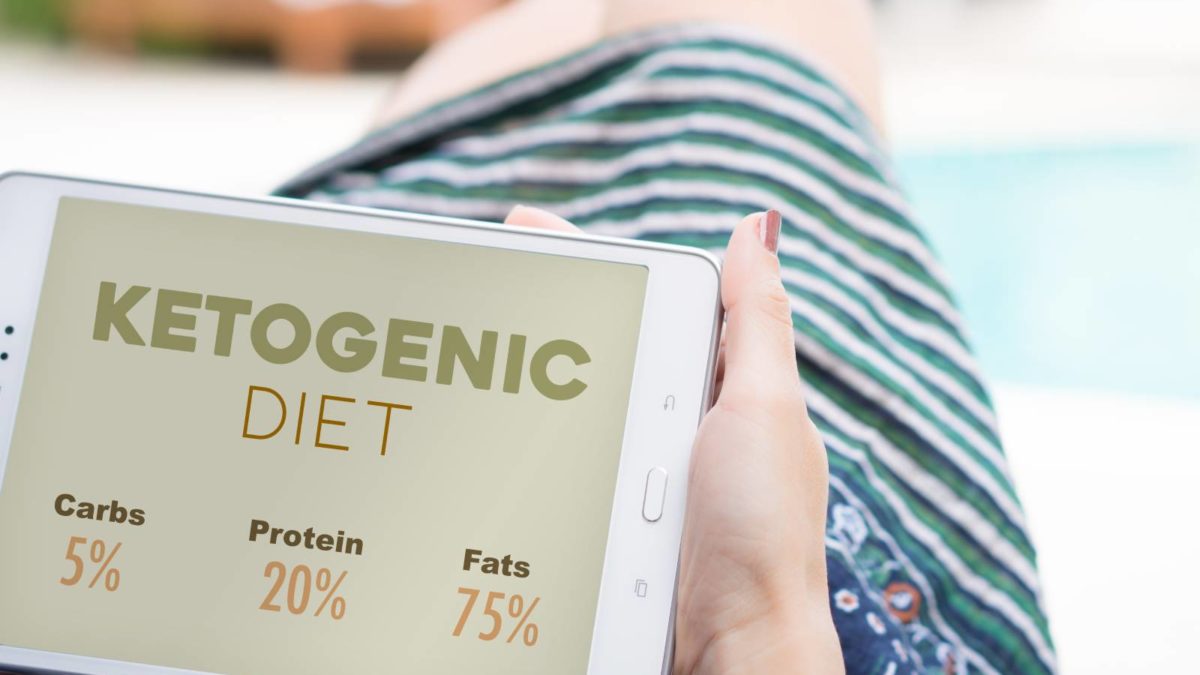6 Hacks to Help You Get Into Ketosis Faster
Interested to learn how you can get into ketosis faster? Read on!
Internet statistics show that more people are interested in the ketogenic diet today than almost any other health and dietary trend. And the surging interest in this healing way of eating is not just some passing fad.
Keto has become popular for a very good reason… because it works!
As you probably know, there’s nothing “new” about the ketogenic diet. It was developed in the 1920s as a way to mimic the metabolic state of fasting. It was used then (and still today) as a profoundly effective treatment for epilepsy and seizure disorders.
However, the benefits of the keto diet go well beyond this particular treatment…
It has the power to optimize and heal your metabolic and hormonal systems. It can detoxify your body at a cellular level (ketones actually help turn cellular waste into energy). It can improve brain function. It also provides dramatic benefits for the prevention and treatment of cancer.
And of course, keto is best known for its ability to help you build a better physique!
When your body enters the state of nutritional ketosis – as a result of consuming a diet very low in carbohydrates, rich in healthy fats and moderate in protein – your metabolism shifts from primarily burning sugar to burning dietary fat (and more importantly, stored body fat) as your primary source of fuel.
This is why keto is such a powerful tool to promote rapid fat loss.
If you’re interested in the ketogenic diet, today’s article will cover how to accelerate your transition into nutritional ketosis!
How Long Will it Take to Get into Ketosis?
Quite a number of personal, genetic and lifestyle factors will determine how quickly you transition into ketosis – and how quickly you get through the adaptation phase to become highly efficient at burning fat.
If you have been following a lower-carb diet for a while and you are already in good physical condition, both of these milestones should arrive quickly. If you keep your carbs to around 5% of your daily calories (for most people, carbs should be in the range of 20 to 40 grams daily), you should enter ketosis in about a week and be fully fat adapted in about four weeks.
That means your metabolism has reached a state where you readily burn stored body fat for energy. And even if you have the occasional meal that “kicks you out of ketosis” you can easily regain ketosis within a day or two.
On the other hand, if you have been eating a high-carb diet, if you have blood sugar issues, and if you are overweight and out of shape, it will take longer. But it is even more critical that you stay the course. Your health depends on it!
If you keep your carbs under the optimal limit, you should be able to transition into ketosis within a week to 10 days. And within about six weeks you can become fully fat adapted and transition from the metabolic state of a Sugar Burner to become a highly-efficient Fat Burner!
Stick to the “Magic Macros”
The ketogenic diet is different from most diets, because it specifies the amounts and ratios of macronutrients (fat, protein and carbohydrates) you should consume. I call these the Magic Macros – and what’s magical is how quickly and effectively this way of eating can transform your body and health!
On a caloric basis, the keto diet should be comprised of:
- 65% – 80% Fat
- 15 – 30% Protein
- 5% – 10% Carbohydrate
This fairly wide range of flexibility reflects the fact that we are all unique. We have different responses to fat, protein and carbs. We all have different activity levels. And as we become fully fat adapted, we may be able to tolerate more carbohydrates – and still remain in ketosis.
Foods to avoid on a ketogenic diet include:
- Grains and starches (including starchy veggies)
- Sugar in all forms (plus artificial sweeteners)
- Unhealthy fats like vegetable, corn and seed oils
- Low-fat dairy (contain more sugar per volume and lacks of important nutrients like CLA)
- Most fruit (lemons, limes and low-sugar berries are okay in moderation)
It is also important to remember that…
Keto is NOT a High Protein Diet
You can certainly enjoy plenty of delicious and satiating pasture-raised bacon, pastured pork, poultry, beef and eggs, as well as wild fish and shellfish on the keto diet. But it is critical to understand that keto is a “moderate” protein diet and that too much protein can block ketosis.
So, while a ketogenic diet should include healthy sources of protein, it should also be abundant in healthy fats, including avocado and avocado oil, tallow, lard and duck fat, pastured butter and ghee, macadamia nuts and oil, olives and olive oil, coconut oil and coconut butter and full-fat dairy (if tolerated), like grass-fed raw cheeses and heavy whipping cream.
Now, let’s discuss how you can…
Accelerate Your Transition into Ketosis
There are a number of hacks, habits and foods that can speed up your transition into ketosis.
Here are five proven ways to accelerate your transition into ketosis:
1. Start Your Keto Diet with a Fast
There is nothing that will make a bigger impact on your health – in a shorter period of time – than fasting!
A two or three day water fast can stabilize your blood sugar, reset your metabolism and rid your body of mutated and even cancerous cells. You will probably also notice a level of mental clarity you haven’t experienced before. And if you can fast for up to five days, it can provide even greater health benefits! Fasting also depletes your body of glycogen and rapidly accelerates your transition into ketosis.
NOTE: If you are currently diabetic, hypoglycemic or facing other health concerns, consult your doctor before fasting. The health benefits could be life-changing. But you should probably enter the process with a bit of medical supervision.
2. Include Intermittent Fasting
As your blood sugar stabilizes, as your body becomes more sensitive to insulin and as you grow adapted to ketosis… your between-meal hunger and cravings will practically vanish. You may find that you are simply not hungry in the mornings.
If that’s the case, I would encourage you to extend your nightly fast. Many who follow the keto diet consume food during a “compressed eating window.” They eat their first solid food around noon (or even later in the day). And they do not eat any food after having dinner at 7 or 8pm.
Eating this way would mean that you are fasting anywhere from 14-18 hours out of each day. Not only does this give your digestion a break. Intermittent fasting provides significant health and fat loss benefits… and makes it easier to maintain a deep state of nutritional ketosis.
3. Exercise on an Empty Stomach
Even if you do not engage in an extended fast, consider working out in the morning or mid-morning, before breaking your nightly fast. This will help to deplete your glycogen stores faster and speed up your transition into ketosis. It can also work wonders for fat loss!
4. Focus on Exercise Intensity
If your goal is to transform your body and your hormonal health, focus on the intensity of your exercise, rather than the duration. Of course, “intensity” means different things to different people.
If you are already in good shape, a high-intensity workout might consist of hill sprints, intervals on the bike or treadmill or a circuit of weights focusing on different parts of the body with moderate rest in between.
On the other hand, if you are significantly overweight or have been mostly sedentary the last few years, “intensity” for you might mean walking around the block at a brisk pace or walking up a hill. Whatever you do, focus on increasing your intensity as your fitness increases (rather than necessarily increasing the duration of your workouts).
5. Supplement with Coconut or MCT Oil
Medium-chain triglycerides (MCTs) are fatty acids that are found in high concentrations in coconut and palm oils. These healthy fats help to enhance ketone production and may speed up your transition into ketosis.
6. Take Exogenous Ketones
I’m not necessarily recommending this, but many on the keto diet have found that supplementing with ketones helps increase ketone levels in the body, reduces symptoms of the “keto flu”, boosts energy, suppresses appetite and helps to regain ketosis faster after eating carbohydrates.
By following the easy tips and tricks in this article, you’ll speed up your transition into ketosis, reduce common side effects and start enjoying the benefits of the keto diet sooner!





Leave a Reply